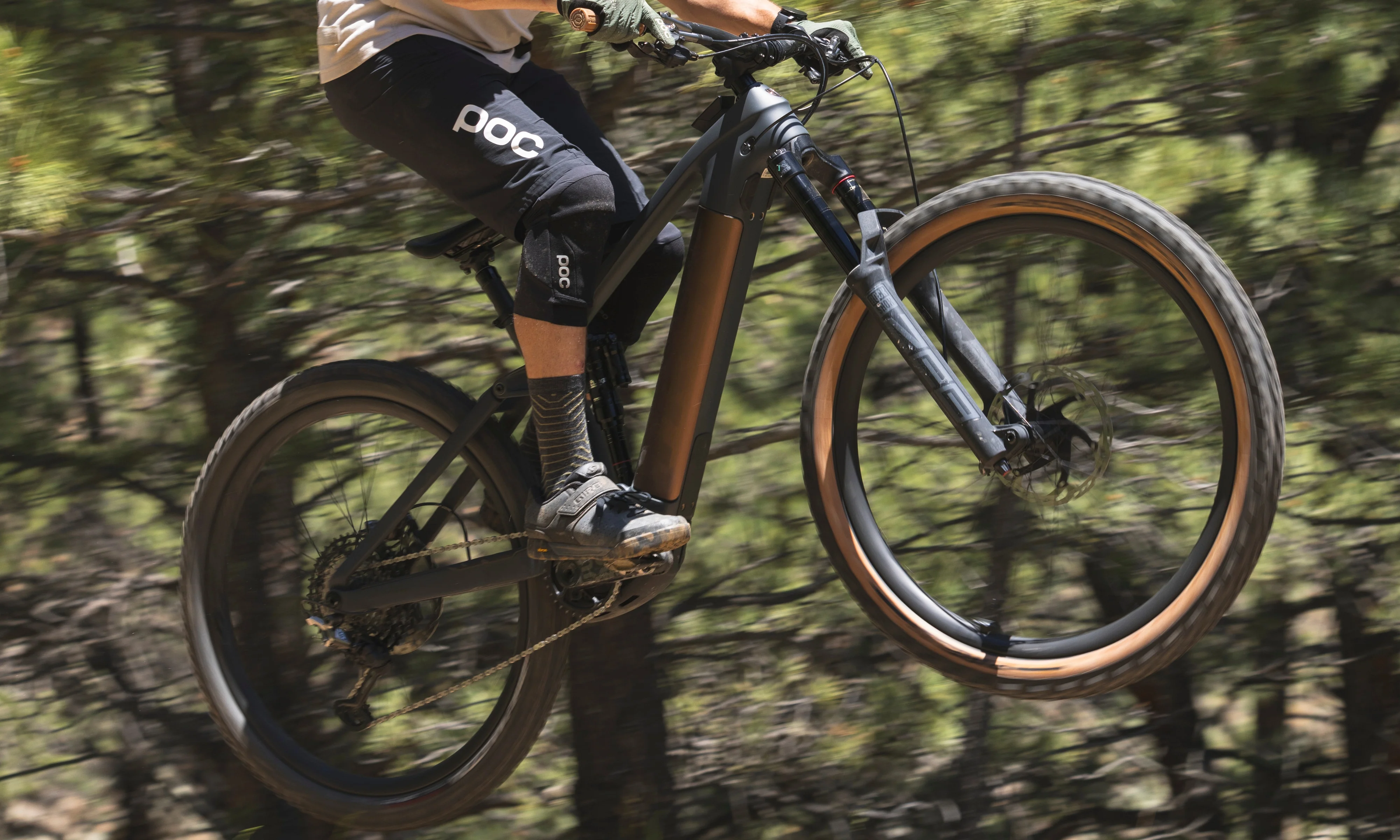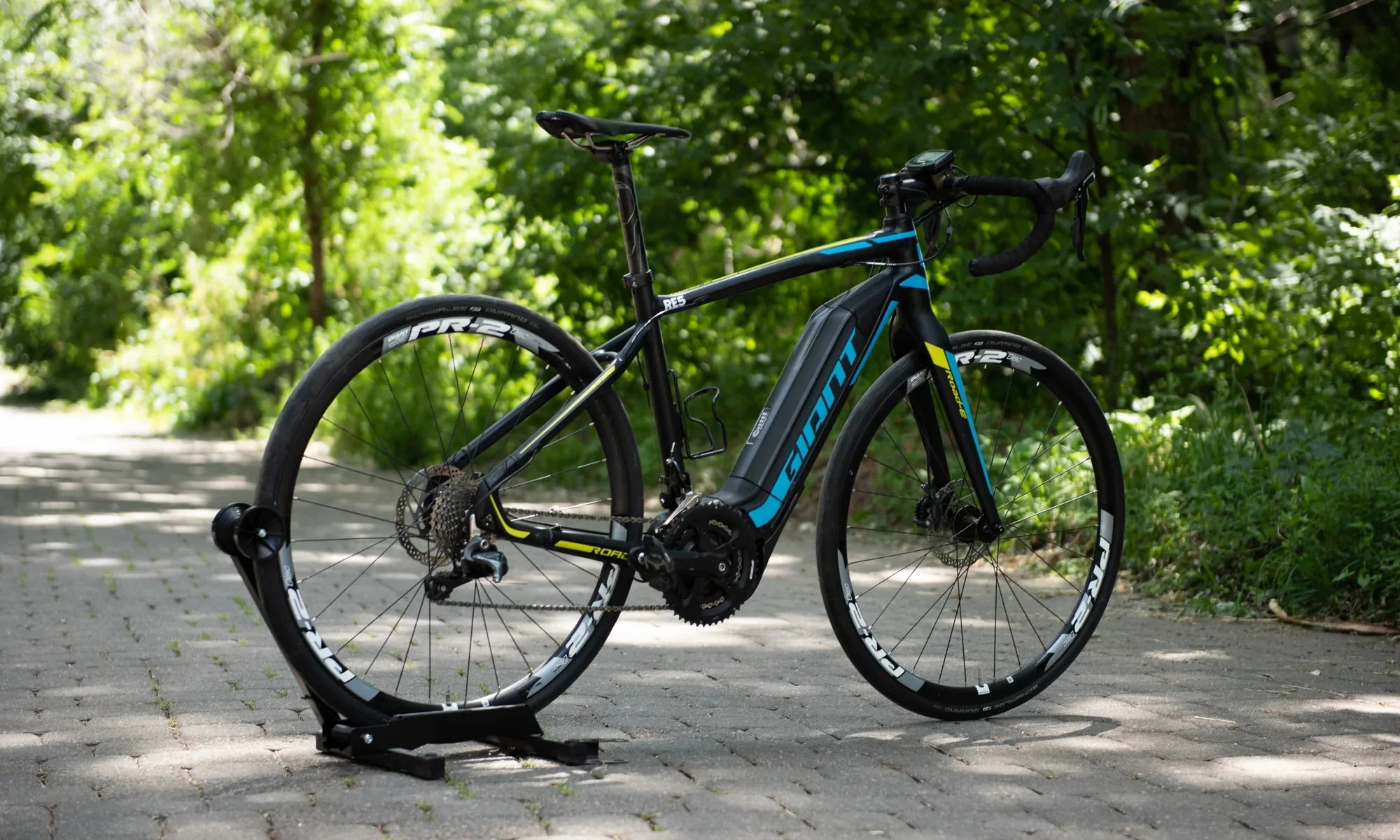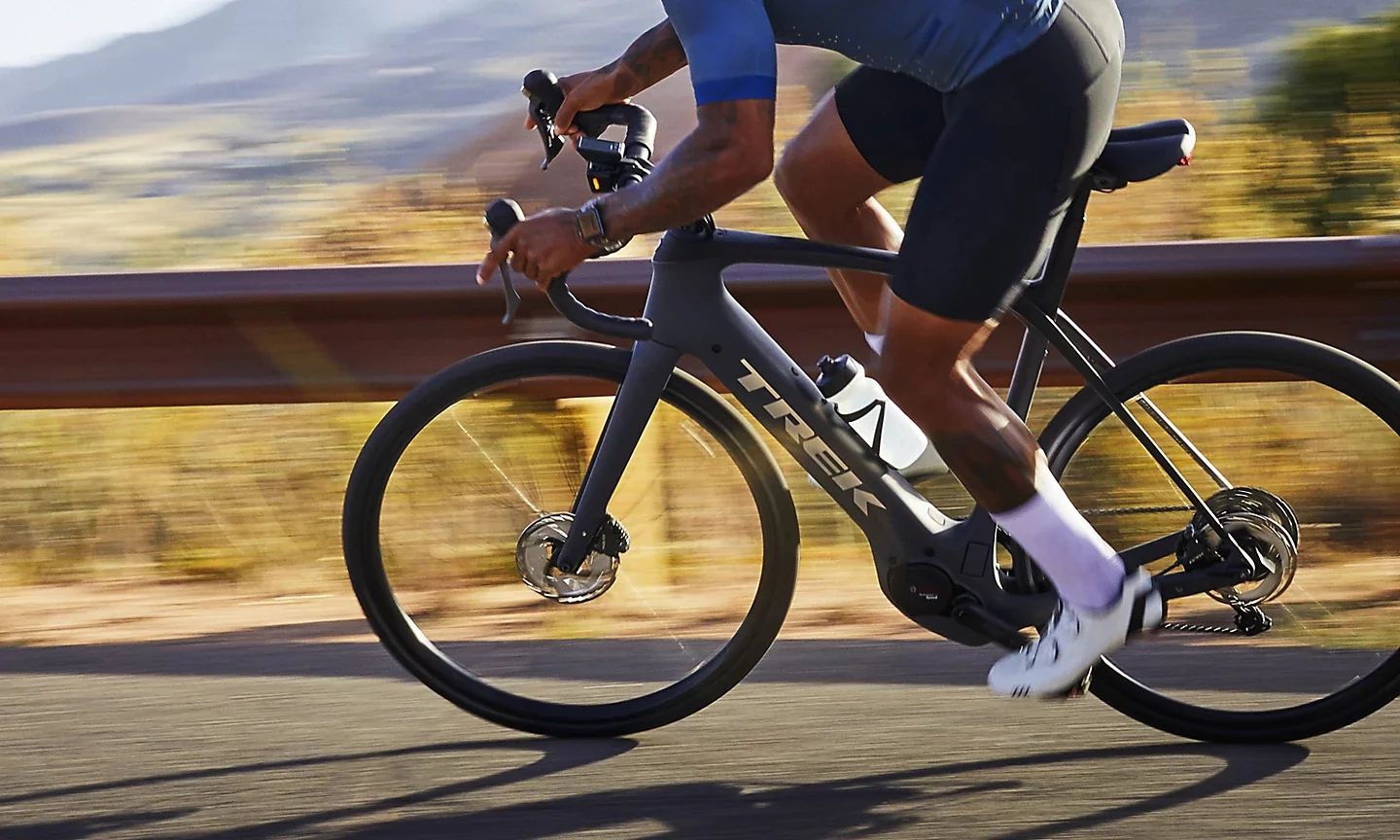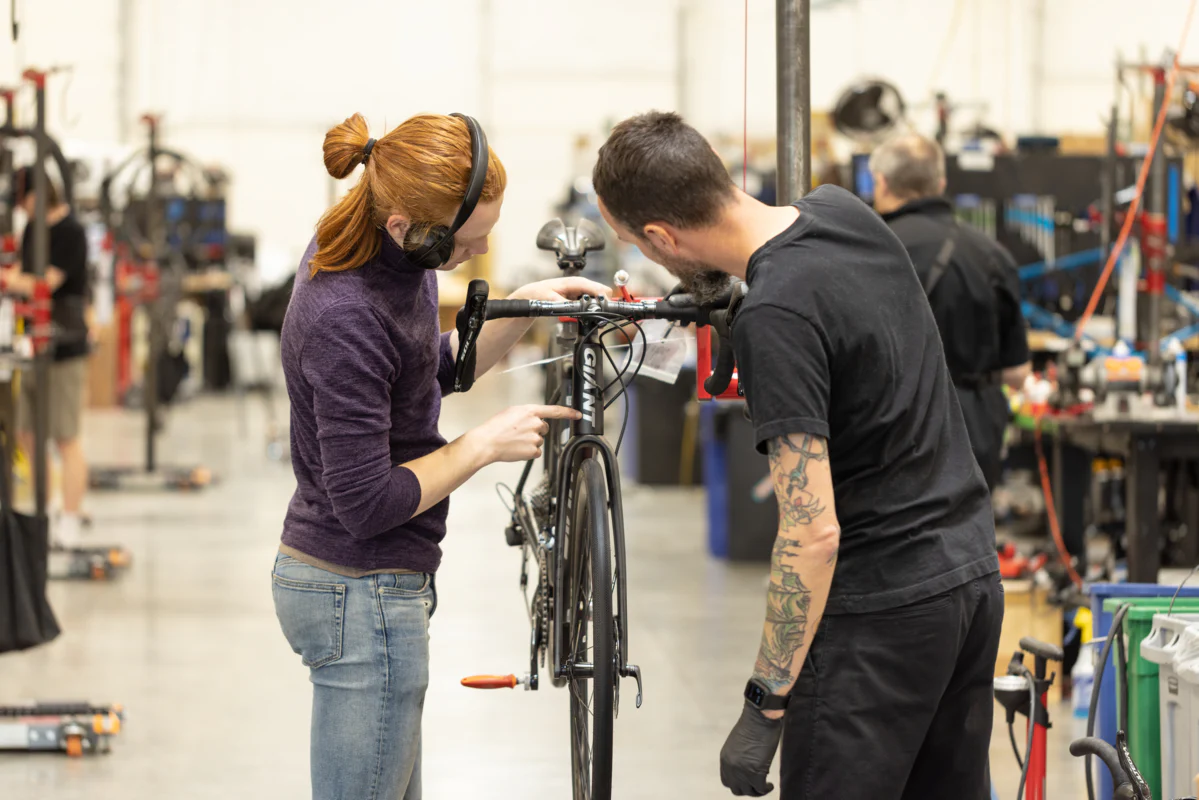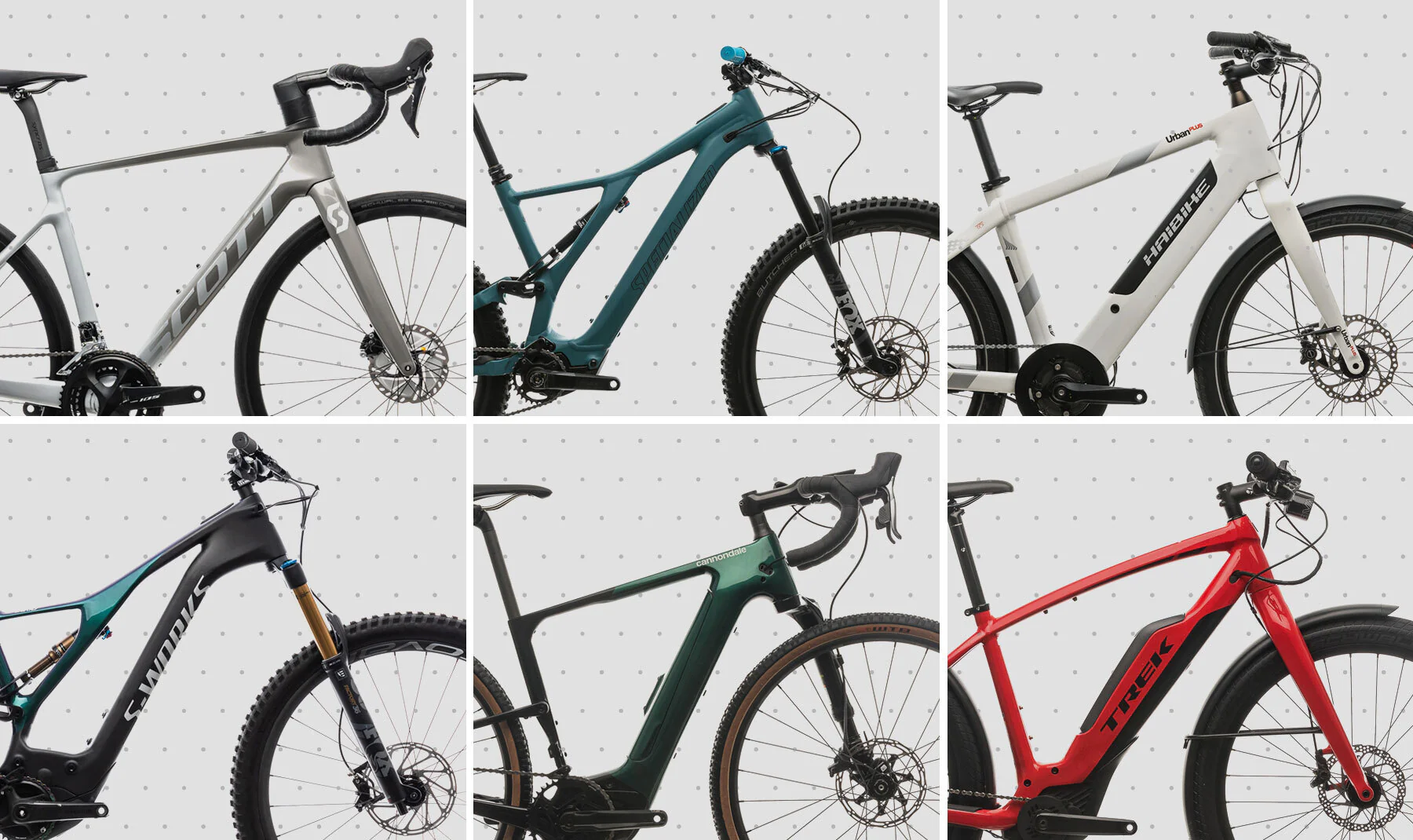Electric mountain bikes (E-MTBs) have revolutionized the way we approach trail riding. With motorized assistance for tough climbs and impressive descending capabilities, E-MTBs equipped with burly components and ample travel are super popular among trail and enduro riders looking to maximize the amount of laps or fun they can get in on a single ride.
Here, we are comparing the two top contenders in the E-MTB market — the 2023 Specialized Turbo Levo and the 2023 Trek Rail (Gen 3) — but instead of looking at the high-end models most publications test, we’ll take a closer look at the budget-focused entry-level models to see what you get when you spend less.
1. Specialized Turbo Levo Alloy vs.Trek Rail 5: Overview
The Specialized Turbo Levo Alloy and the Trek Rail 5 are entry-level full-suspension electric mountain bikes designed to handle gnarly trails without breaking the bank (too much). They feature aluminum frames and are built using budget-focused components, but they use the same motors as high-end models. Let's take a closer look at each bike's specifications:
|
Specialized Turbo Levo Alloy |
Trek Rail 5 |
|
|
MSRP |
$5,500 |
$5,149 |
|
Frame Material |
Aluminum |
Aluminum |
|
Wheel Size |
29/27.5” |
29” |
|
Motor |
Specialized 2.2 Custom Rx Trail Tuned (90Nm) |
Bosch Performance Line CX (85Nm) |
|
Battery |
Specialized M3-700 (700Wh) |
Bosch PowerTube (500Wh) |
|
Suspension Travel |
160/150mm |
160/150mm |
|
Fork |
RockShox 35 Silver |
RockShox 35 Gold RL |
|
Rear Shock |
RockShox Deluxe Select R |
RockShox Deluxe Select+ RT |
|
Drivetrain |
SRAM SX/NX Eagle 12-speed |
Shimano Deore 12-speed |
|
Brakes |
SRAM Guide RE, 4-piston |
Shimano M4000 Series 4-piston |
|
Wheels |
Specialized 29" hookless alloy |
Alex MD35 alloy |
|
Claimed Weight |
52 lbs (S4) |
53.56 lbs (Med) |
2. Spec Comparison
 The Specialized Turbo Levo motor
The Specialized Turbo Levo motor
- Motor & Battery: The Specialized motor has slightly more torque, is a bit quieter, and the Turbo Levo comes with a significantly larger battery. Winner: Turbo Levo

- Suspension: The Turbo Levo and the Rail both have 160mm of front travel and 150mm of rear travel. They also use the same entry-level fork. The Rail, however, uses a Deluxe Select+ RT shock with an extra compression lever to adjust damping. Winner: Rail

- Drivetrain: Generally, Shimano Deore is reviewed much more favorably than SRAM SX as a reliable entry-level drivetrain. Winner: Rail

- Brakes: Both bikes use 4-piston brakes for extra stopping power. Larger-size Turbo Levos also come with a 220mm front rotor to handle bigger riders, which is think is good. I highly prefer the SRAM brakes, but both braking systems will work, and brakes are highly personal. Winner: Turbo Levo

- Dropper: Both bikes use a budget TranzX dropper, but the Turbo Levo provides much longer drop options (150mm-200mm) for the larger (S4-S6) sizes while the Rail uses a 130mm drop for medium to XL. Winner: Turbo Levo
- Wheels & Tires: Both bikes use entry-level alloy wheels with wide internal rim widths, basic hubs, and house brand tires. Both bikes come with 29" front wheels, but the Turbo Levo uses a mullet setup with a 27.5” rear, which can provide more mobility on tight, steep trails. Wheelsize is a matter of preference, but I’m of average height and tend to prefer mullets, especially for heavy E-bikes. The mullet set-up should suit a much wider range of riders and riding styles and I think it makes the most sense for this application. Winner: Turbo Levo
- Weight: Both bikes are very heavy, but the Turbo Levo comes in a couple of pounds less. That counts for something... Winner: Turbo Levo
- Cost: The entry-level Rail retails for $350 less than the entry-level Turbo Levo. Winner: Rail
Final Score
Turbo Levo Alloy: 5
Rail 5: 3
Does this mean the Turbo Levo Alloy is better? Not necessarily. Keep in mind this is my own subjective assessment, and some of these points should be weighted more heavily than others (see below).
As for other elements, like the Specialized vs. Bosch controls, they're both fairly intuitive and easy to use. The cockpits and cranks are all entry-level alloy options that really aren't worth comparing.
3. Geometry Comparison
|
Specialized Turbo Levo Comp Alloy (S3) |
Trek Rail 7 (Med) |
|
|
Head Tube Angle |
64.5° |
64.9°/64.5° (high/low) |
|
Seat Tube Angle |
76.7° |
75.4°/75° |
|
Stack |
626mm |
622/626mm |
|
Reach |
452mm |
450/445mm |
|
Chainstay Length |
442mm |
447/448mm |
|
Bottom Bracket Drop |
27mm |
29/35mm |
|
Wheelbase |
1225mm |
1220/1221mm |
Both the Turbo Levo and Rail have very similar geometry. The Turbo Levo is slightly longer for riders who want a bit more reach or stability. It also has a steeper seat tube angle which many riders prefer on steep climbs for maintaining a more centered pedaling position. The Rail has a flip chip to switch between high and low geometry modes, which means you can put it into the slightly more agile high mode for tighter trails. Really though, I don't think there's anything to choose between the geometry of these two bikes.
4. Overall Pros and Cons
Specialized Turbo Levo Alloy:

- Pros:
- More powerful motor with 90Nm of torque
- Higher-capacity 700Wh battery
- Slightly quieter
- Cons:
- Slightly higher price point
- SRAM SX rear derailleur
Trek Rail 5:

- Pros:
- Shimano Deore drivetrain is crisp and reliable
- Slightly more budget-friendly
- Select+ rear shock with compression damping
- Cons:
- Slightly heavier
- Brakes aren’t my favorite
Analysis
I like that the Specialized Turbo Levo Alloy comes with the extra large Specialized M3-700 integrated battery, boasting 700Wh of capacity. With a higher capacity, the Turbo Levo Comp can go longer than the Rail before needing to recharge.
As for the motors, the Specialized motor has more torque on paper, but it’s unlikely that most riders will be able to notice it out on the trail. When it comes to noise, to my ear, the Specialized motor is quieter than the Bosch motor.
Although shifting performance isn’t the most important thing on a pedal-assist bike, I do prefer the Shimano Deore on the Rail to the SRAM SX on the Turbo Levo. If I owned the Turbo Levo I’d eventually upgrade the SX Eagle rear derailleur to GX Eagle or better in the future, just to get slightly crisper shifts and a more durable derailleur.
Both bikes offer enough suspension for soaking up bumps and maintaining control on technical trails but I’d consider upgrading the basic RockShox 35 forks in the future too. The same goes for the basic alloy wheels. The Rail comes with a slightly nicer Select+ shock, but the compression adjust feature it adds likely won't be used too often on a pedal assist bike so that's not a big plus for me.
Then there's the looks. Beauty is in the eye of the beholder, and I personally prefer the boxier shapes and current color options for the Rail.
Conclusion: Ultimately, the Trek Rail 5 is the more affordable option. Unless battery capacity is your main priority, I think the Rail is a slightly better value.


